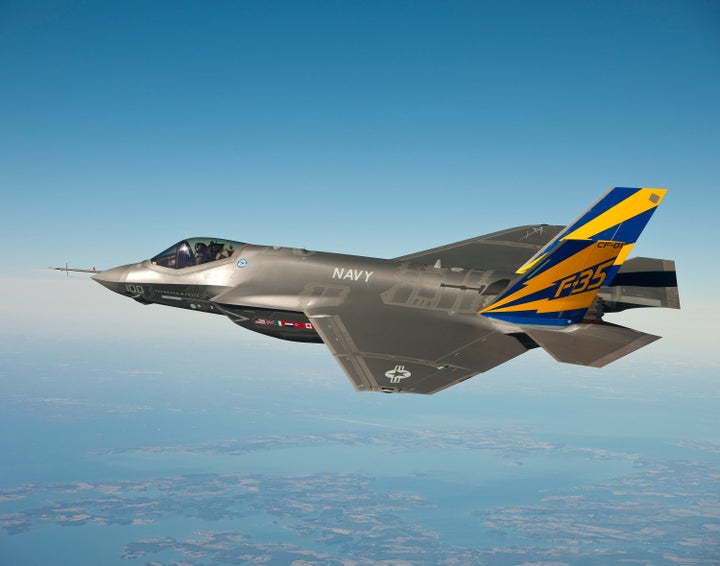
By Colin Clark
Editor, AOL Defense
WASHINGTON -- The Obama administration may think it has killed the second engine program for the world’s most expensive military weapons program ever, the F-35 Joint Strike Fighter.
Maybe, maybe not. The House Armed Services Committee -- led by one of Congress’ staunchest supporters of the second engine program, Buck McKeon (R-Calif.) -- looks set to pass language that would require the Pentagon to open the program to competing manufacturers.
That could mean funding General Electric’s F136 engine program. But the language in HASC's spending outline is conditional. It would stop the Pentagon from spending money on thrust and other performance improvements to the Pratt & Whitney engine -- the F135 -- unless it also opened the program to competitors.
It looks as though the F135 engine may require improvements costing as much as $1 billion. That means the House Armed Services tactical air and land forces subcommittee language would force the Obama administration to once again fund the F136.
House aides made clear the frustration representatives felt at the administration’s decision to scrap the F136. The issue for Rep. McKeon, one aide said, is “accountability.” Without a second engine program, Pratt would be free to spend money without the pressure of a competitor forcing it to build an engine with more thrust.
Pratt reacted quickly to the spending proposal. "This just seems like a way to punish the whole F-35 program because the F136 extra engine was terminated," Stephanie Duvall, Pratt spokeswoman, said in an email.
GE is pushing hard to ensure it gets a shot at Pentagon spending on aircraft engines. The HASC seapower and projection subcommittee proposed changes that would force the Pentagon to designate engines for the planned long-range bomber as a major subprogram -- one that must be competitive. That would effectively guarantee both GE and Pratt shots at the program.
No total cost estimates for the bomber are available.
Other defense spending projects could see tighter regulation under the proposed budget.
The tactical air and land forces subcommittee placed strict limits on Pentagon spending for the Army’s $30 billion Ground Combat Vehicle, due to be designed and built within seven years. Before Congress would release all funding for the program, the defense secretary would have to come up with “a quantitative comparison” for an upgraded Bradley Fighting Vehicle.
“The committee understands that the Army wants the GCV to carry three additional soldiers, but the committee believes that should not be the primary attribute that drives the decision on continuing the project on its current path,” the revision reads.
Finally, the HASC seapower subcommittee told the Pentagon it still does not believe the Navy or Marines know what they want to do about replacing the Expeditionary Fighting Vehicle (EFV), an amphibious armored vehicle designed to get troops from ships to shore with speed and safety. Defense Secretary Robert Gates canceled the EFV, arguing it was too expensive and had taken far too long to develop. But the Marines say they are committed to building another one, this one called the Amphibious Combat Vehicle.
The proposed bill says it will limit funding for the replacement, which is expected to cost as much as $7 billion. In the bill's revision notes, seapower subcommittee members said the Marines and Navy did not do “proper analysis” before cancelling the EFV.
Launching in Spring 2011, AOL Defense will provide news, insight and tools about the defense sector. Follow Colin on Twitter at @colinclarkaol. Follow AOL Defense at @aoldefense.